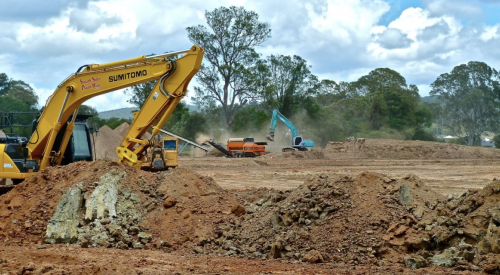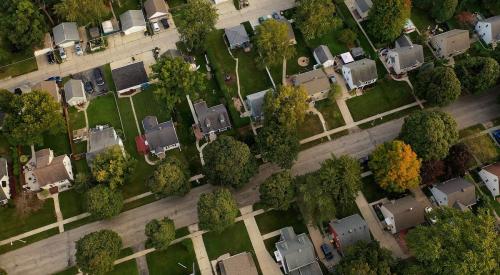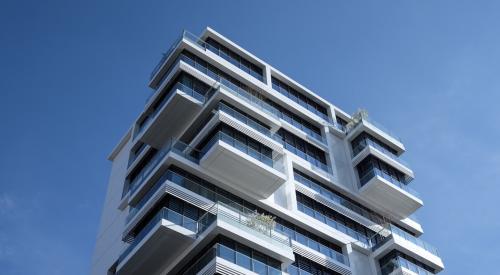The leading edge of America's baby boom generation is now in its peak earning years. With all that disposable income and the expenses of raising children in the rear-view mirror for many of them, boomer empty nesters are ready to indulge themselves as they pass age 50. All signs point to an impending boom in resort and vacation second homes. The interesting variable is what, where and why they buy. It may be very different from the pattern set by the World War II generation.
Don't look now, but it's already happening. The boomer impact is evident in the second-home market right now. And remember, the top year for boomer births was 1957, so the peak of this market may be nine years away.
|
"A boomer turns 50 every seven seconds," says Rich Sonntag, senior vice president of community development for The Pivotal Group, a Phoenix, Ariz.-based developer of resort communities, including Promontory, a 10-square-mile project in Park City, Utah. "Everything we do is aimed at the aesthetics and idealism of that generation. They have money, and they're making lifestyle choices, but not selfish ones. They're using resort homes as a way to lure three or even four generations of family back together. Boomers seem to feel a sense of guilt about the time they spend away from family. They're looking for a way to make up for it. We help them, and we feel really good about our prospects for the next five years."
No wonder. The demographics are impressive enough. Add income data to the Census numbers and the picture that emerges is staggering. A Southern California research firm - Claritas Inc., based in San Diego - does this work on a site-specific basis, but we asked them for the big picture. See the Counting Baby Boomers chart for the United States as a whole.
|
||||||||||||||||||||||||||||||||||||||||||||||||||||||||||||||||||||||||||||||||||||||||||||||||
We postulate that the second-home market kicks in above 45 years of age and $100,000 of annual income. From these numbers, you can see the tidal wave of well-heeled boomers rolling into the market. But don't look for housing starts or second-home sales statistics to confirm the scope of this gathering army of buyers. The data doesn't exist, because what constitutes a "second home" is hard to define and even harder to measure.
Jacksonville, Fla.-based market researcher David F. Parker studies the second-home market for clients throughout the United States and in the Caribbean and Central America. He says the numbers are elusive: "When people buy housing in resort areas, they do it for many reasons other than just their own recreational use," he says. "There's almost always a big investment aspect. Homes and condos are often purchased in shared-ownership arrangements that may be formal, with the housing units rented out for part of the year in a rental program, or just simple partnerships with friends.
"A house purchased as a second home may become a primary residence for a retiree within only a couple of years," Parker continues. "That happens a lot in Florida."
Such complexity works against measurement. "We are probably building over 150,000 new second homes a year, up from 75,000 ten years ago," Parker says. "The National Association of Realtors estimates sales of new and existing second homes at close to 400,000 a year. But hard data to support those estimates is sketchy."
NAHB economist Michael Carliner, who studied the imprecision of second-home measurement just two years ago, figures the net annual increase in second homes at 100,000 right now. "We're expecting that to go to 125,000 a year because of the impact of the baby boom generation," he says. "That doesn't mean we'll build that many each year, because units can shift back and forth between primary and secondary uses."
Isolated Hot Markets
One way to get a feel for what's happening in the second-home market is to look at building-permit data in isolated markets where vacation homes are the biggest contributor to total housing starts. Irvine, Calif.-based consultant and PB columnist John Burns pulled the recent history of building permits for some popular second-home markets where you can see the tide rising.
Check out the pricing in resort markets and you're likely to find a steady upward spiral that eventually reaches such extremes, land costs and political opposition to growth finally choke development, creating a formidable barrier to entry. You'll find that on full display in places like Aspen and Kiawah Island, S.C., where it's hard to find anything under $1 million. But there's a positive side to such price escalations.
"There's been a general realization by investors in the last couple of years that real estate is doing better than the stock market," says Earlysville, Va.-based resort marketing consultant Ralph Bowden. "Amenitized resort communities are the best of all. The under-performance of the stock market boosted the second-home market. Even when stocks recovered, people decided they'd had enough of that roller coaster. A second or third home isn't just a good investment, of course. It provides real enjoyment and works as a bond to bring scattered families back together for holidays and vacations. But without price appreciation, our story would not be as strong."
The rule of thumb for price appreciation in second-home communities is 20% a year for oceanfront property; 15%, on a golf course or for most other amenities. "We've had appreciation in resales from 10% to 30%, and it's all dependent on view," says Randy Brooks, principal of Mountain Air, a fly-in resort high in the Blue Ridge Mountains near Burnsville, N.C. "We've had that distribution in every product category. View is the only variable."
Opportunities Abound
If you're a young builder interested in breaking into the second-home business, you need to understand where the opportunities are, what the barriers to entry may be, and how to get past them. "The most important thing to know is that baby boomers are different, and even the most experienced developers are still trying to figure them out," says Atlanta-based consultant Pete Halter. "We're running out of beaches. The ocean is now almost entirely dominated by high-rise condo building.
"Find a lake," he advises. "Any decent-sized body of water within two or three hours of a major city is golden. And there's a big, second-home market in the city itself. Empty nesters are selling their big homes in the suburbs and buying a condo or townhouse in the city, and a detached home in a resort destination - like the Florida Panhandle or the mountains of North Carolina. They downsize with quality in town and use the resort home as summer camp to try to get the family back together again."
Developers in the West are learning to build projects a short drive away from the ski slopes, Halter says, so they can broaden their activity offering to include all seasons, not just winter. "Right next to a ski run, there's not much going on in July," he says. "But find a spot in a valley a few miles away and you can build a family resort with golf, hiking, biking and equestrian facilities that can be used at other times of the year."
Density Niches
Halter believes the best way for a builder to break into the business is by creating a joint venture with master-planned community developers. "Developers can find custom home builders even in the most remote resort locations," he says, "but they're having trouble finding someone to build the high-density, niche product like golf cottages. That takes some production-building skill.
"If you're willing to joint-venture with a developer and take down parcels of land, rather than lots," he continues, "and if you can build 20 to 50 cottages at high density close to an amenity like the golf clubhouse, marina or a ski slope, there are developers all over the country who will welcome you with open arms."
Bradenton, Fla.-based builder and developer Pat Neal confirms Halter's assessment. "I've been building a patio home product, 32 feet wide, for snowbird second-home buyers and active adults for years. Lakewood Ranch came to us to do it because they couldn't find anyone else. We sell it as a customized production house, with lots of packaged options, but no structural modifications allowed. Taylor Woodrow is now starting to do this product in its own developments. They couldn't find a builder, and I think they also figured out how profitable it is."
Without exception, the consultants and builders we interviewed believe the biggest challenges you'll face breaking into a second-home market are the shortage of trades and financing in these often remote regions. "A developer can help with financing," Halter says, "but trades that can handle high-quality production building in remote areas are a real problem for everyone."
Diana Permar, a resort development consultant based in Charleston, S.C., suggests you look for opportunities near any natural amenity that offers boomers a chance to hike, bike, canoe or kayak themselves to exhaustion. "It's hard to generalize because boomers are so unpredictable," she says, "but we know they're a lot more active than any past generation. That's why I worry that we're building too many golf courses. Boomers like to live on golf courses. They like to look at them and they love the appreciation rate of golf club real estate. But they're not playing the game much. The numbers of really avid golfers are actually declining. It requires too much time to play it well, and it may be too sedentary for boomers."
However, Permar is an optimist on the staying power of boomers in the second-home market. "This is going to last a lot longer than some people think," she says. "Boomers will buy vacation homes much later than previous generations. They put off everything in life - marriage, kids, homeownership. They're going to fight this aging thing. Don't try to tell them they're too old."
Even with many golf clubs fighting to stay profitable, there's plenty of evidence the course remains an amenity capable of driving home sales in overheated resort communities. An hour north of Tampa, near Brooksville, Fla., Jacksonville-based LandMar Group has proof at a 1,000-acre community called Southern Hills Plantation.
"This is the first Pete Dye-designed golf course in the Tampa area," reports LandMar vice president of marketing Jim Doyle, "and it's on rolling hills, with elevations between 55 and 250 feet, which is unusual for Florida. We put in architectural controls written by BSB Architects to match the low country, craftsman and Victorian styles of downtown Brooksville. We ran a whisper campaign and took 180 reservations ($1,000 deposits). We've had to open a second phase because we've now taken over 400 reservations, even though our lots range from $65,000 to $350,000. Our average lot price is higher than the average existing home price in Brooksville."
Want to bet there aren't a few speculators involved?
Costa Rican Connection
David Parker believes American builders should not limit themselves to looking for opportunities within U.S. borders. "Over 50,000 Americans now own homes in Costa Rica. In 2003, Delta Airlines initiated three direct flights a week into Daniel Oduber International Airport in Liberia, the provincial capital in northwest Costa Rica's Pacific Coast region. This year, Delta increased it to five times a week, and American, Continental and US Air joined in."
Big resort hotels bring American tourists to the islands of the Bahamas and Caribbean, as well as Costa Rica, Parker says, and ownership housing follows close behind. "The developers we work with face even more daunting challenges in getting homes built than those who work in remote regions of the United States. But these countries have beaches to develop. Your readers are already working offshore, for the same reasons that northern builders once came to Florida to do projects. It's great work in the winter. You can buy land. Many countries have relaxed their restrictions on foreign ownership to encourage development.
"This is such a growth market, it's spilling over our borders," Parker says, "and boomers are much more mobile and adventurous than their parents. They get on planes and go. And they're not afraid to buy second homes anywhere there's a stable government, like Costa Rica."
Centex Swims To Hawaii
Centex Homes, the Dallas-based behemoth that ranks No. 4 on PB's GIANTS list with over $7 billion in housing revenue, thinks enough of the growth in resort and vacation housing to have launched a new division three years ago called Centex Destination Properties. The presence of two projects in Hawaii among its earliest efforts hints that 'off-shore' may not be a dirty word in Dallas.
"Placing resorts within driving distance of major metro markets is one strategy," CDP vice president of strategic marketing Paul Bessler says "But we'll soon release results of a study we did that may point other ways. Airports are important. We have a project in Galveston, Texas, that will be a great weekend retreat for people from Houston, and our project in western North Carolina is within driving distance from Atlanta and Charlotte. But many of our communities will not be accessible by car. You can't drive to Hawaii."











